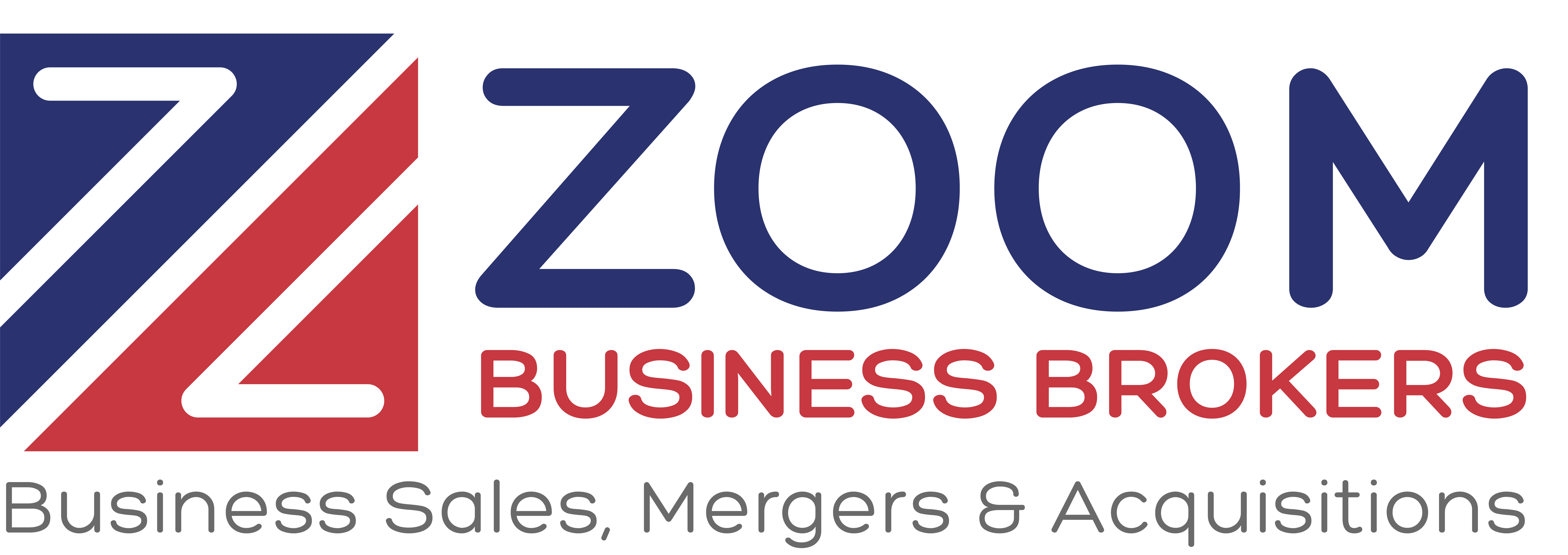
Keys to a Successful Closing
The closing is the formal transfer of a business. It usually also represents the successful culmination of many months of hard work, extensive negotiations, lots of give and take, and ultimately a satisfactory meeting of the minds. The document governing the closing is the Purchase and Sale Agreement. It generally covers the following:
• A description of the transaction – Is it a stock or asset sale?
• Terms of the agreement – This covers the price and terms and how it is to be paid. It should also include the status of any management that will remain with the business.
• Representations and Warranties – These are usually negotiated after the Letter of Intent is agreed upon. Both buyer and seller want protection from any misrepresentations. The warranties provide assurances that everything is as represented.
• Conditions and Covenants – These include non-competes and agreements to do or not to do certain things.
There are four key steps that must be undertaken before the sale of a business can close:
1. The seller must show satisfactory evidence that he or she has the legal right to act on behalf of the selling company and the legal authority to sell the business.
2. The buyer’s representatives must have completed the due diligence process, and claims and representations made by the seller must have been substantiated.
3. The necessary financing must have been secured, and the proper paperwork and appropriate liens must be in place so funds can be released.
4. All representations and warranties must be in place, with remedies made available to the buyer in case of seller’s breech.
There are two major elements of the closing that take place simultaneously:
• Corporate Closing: The actual transfer of the corporate stock or assets based on the provisions of the Purchase and Sale Agreement. Stockholder approvals are in, litigation and environmental issues satisfied, representations and warranties signed, leases transferred, employee and board member resignations, etc. completed, and necessary covenants and conditions performed. In other words, all of the paperwork outlined in the Purchase and Sale Agreement has been completed.
• Financial Closing: The paperwork and legal documentation necessary to provide funding has been executed. Once all of the conditions of funding have been met, titles and assets are transferred to the purchaser, and the funds delivered to the seller.
It is best if a pre-closing is held a week or so prior to the actual closing. Documents can be reviewed and agreed upon, loose ends tied up, and any open matters closed. By doing a pre-closing, the actual closing becomes a mere formality, rather than requiring more negotiation and discussion.
The closing is not a time to cut costs – or corners. Since mistakes can be very expensive, both sides require expert advice. Hopefully, both sides are in complete agreement and any disagreements were resolved at the pre-closing meeting. A closing should be a time for celebration!

“Red Flags” in the Sunset
Unlike that poetic title of an old-time standard song, Red Sails in the Sunset, red flags are not a pretty sight. They can cause a deal to crater. Sellers have to learn to recognize situations indicating there might be a problem in their attempt to sell their business. Very, very seldom does a white knight in shining armor riding a white horse gallop up, write a large check and take over the business – no questions asked. And, if he did, it probably should raise the red flag – because that only happens in fairy tales. Now, if the check clears – then fairy tales can come true.
Sellers need to step back and examine every element of the transaction to make sure something isn’t happening that might sink the deal. For example, if a company appears interested in your business, and you can’t get through to the CEO, President, or, even the CFO, there most likely is a problem. Perhaps the interest level is not what you have been led to believe. A seller does not want to waste time on buyers that really aren’t buyers. In the example cited, the red flag should certainly be raised.
A red flag should be raised if an individual buyer shows a great deal of interest in the company, but has no experience in acquisitions and has no prior experience in the same industry. Even if this buyer appears very interested, the chances are that as the deal progresses, he or she will be tentative, cautious and will probably have a problem overcoming any of the business’s shortcomings. Retaining an intermediary generally eliminates this problem, since every buyer is screened and only those that are really qualified are even introduced to the business.
Both of the above examples are early-stage red flags. Sellers have to be focused so they don’t waste their time on buyers that are undesirable. If a buyer appears to be weak, does not have a good reason to need the deal, or is otherwise unqualified, the red flag should be raised because the chances of a successful transaction are diminished. The seller might seriously consider moving on to other prospects.
Red flags do not necessarily mean the end of the deal or that it should be aborted immediately. It simply means that the seller should pay close attention to what is happening. Sellers should keep their antenna up during the entire transaction. Problems can develop right up to closing. Here is an example of a middle-stage red flag: The seller has received a term sheet from a prospective buyer and is then denied access to the buyer’s financial statements in order to verify their ability to make the acquisition. As a reminder, a term sheet is a written range of value for the purchase price plus an indication of how the transaction would be structured. It is normally prepared by the would-be purchaser and presented to the seller and is non-binding. A buyer who is not willing to divulge financial information about his or her company, or, himself, in the case of an individual, may have something to hide. Due diligence on the buyer is equally as important as due diligence on the business.
If a proposed deal has entered the final stages, it doesn’t mean that there won’t be any red flags, or any additional ones, if there have been some along the way. If there have been several red flags, perhaps the transaction shouldn’t have gone on any further. It is these latter stages where the red flags become more serious. However, at this point, it makes sense to try to work through them since problems or issues early-on apparently have been resolved.
One red flag at this juncture might be an apparent loss of momentum. This might mean a problem at the buyer’s end. Don’t let it linger. As mentioned earlier, at this juncture all stops should be pulled out to try to overcome any problems. If a seller, or a buyer, for that matter, suspects a problem, there might very well be one. Ignoring it will not rectify the situation. When a red flag is recognized, it is best that it be confronted head-on. It is only by acting proactively that red flags in the deal can become red sails in the sunset – a harbinger of smooth sailing ahead.
BackyardProductions/BigStock.com
Copyright: Business Brokerage Press, Inc.
Read More
The Confidentiality Myth
When it comes time to sell the company, a seller’s prime concern is one of confidentiality. Owners are afraid that “if the word gets out” they will lose employees, customers and suppliers. Not to downplay confidentiality, but these incidents seldom happen if the process is properly managed. There is always the chance that a “leak” will occur, but when handled correctly, serious damage is unlikely. Nevertheless, a seller should still be very careful about maintaining confidentiality since avoiding problems is always better than dealing with them. Here are some suggestions:
- Understand that there is a “Catch 22” involved. The seller wants the highest price and the best deal, and this usually means contacting numerous potential buyers. Obviously, the more prospective buyers that are contacted, the greater the opportunity for a breach of confidentiality to occur. Business intermediaries understand that buyers have to be contacted, but they also realize the importance of confidentiality and have the procedures in place to reduce the risk of a breach. Another alternative is to work with just a few buyers. This, however, does reduce the chances of obtaining the best price.
- Another way to avoid this breach is to try to keep a short timetable between going to market and a closing. The shorter the timetable, the less the chance for the word to get out. One way to keep a short timetable is to gather all of the information necessary for the buyer’s due diligence ahead of time. Create a place where all of this material can be consolidated. This can be as simple as a set of secured file drawers. Such documentation as: customer and vendor contracts, leases and real estate records, financial statements and supporting schedules (assets, receivables, payables), conditions of employment agreements, organization charts and pay schedules, summary of benefit programs, patents, etc. should be gathered. It is not unusual for due diligence examinations to look back 3 to 5 years, so there could be a lot of records.
- The above means that the seller has to get organized. Selling one’s business is fraught with paperwork. Set up some three-ring binders so all of the relevant paperwork and resulting documentation has a place. These binders should be kept in a secure location.
- The seller’s employees should be conditioned to having strange people (potential buyers) walk through the facility. One way to avoid suspicion is to arrange to have unrelated people, for example – customers, suppliers, advisors – tour the company facilities prior to placing the business on the market.
- If sellers have not prepared their employees for strangers walking through the facilities as suggested above, awkward situations can develop. A valued employee may question why tours are being conducted. The seller is then placed in the position of explaining what is happening or covering the question with a “smokescreen.” A seller could reply by saying that the strangers are possible investors in the company. If asked directly if the business is for sale, the seller could respond by saying that if General Electric wants to pay a bundle for it – anything is for sale. Once in the selling process, it is also important to minimize traffic by only allowing serious, qualified prospects to tour the operation.
- Keep in mind that confidentiality leaks can emanate from many sources. For example, an errant email ends up on someone else’s email. A fax gets sent to the wrong fax machine or UPS or FedEx deliveries go to the wrong people. Establish methods ahead of time on how to communicate with potential buyers or an intermediary.
- The key to handling confidentiality is for the seller to retain a third party intermediary. They will insist that all potential buyers sign a confidentiality agreement. They will also be able to advise the seller on how to handle the “company tours” and can insure that only qualified buyers are shown the facilities.
- The “myth” is that confidentiality issues can make or break a deal, or cause serious damage to the seller’s business. The reality is that breaches seldom occur when an intermediary is involved, and if they do occur and are handled properly, there is little damage to the business or a potential transaction.
Copyright: Business Brokerage Press, Inc.
Read More
A Selling Memorandum
A sellers memorandum includes all those points one would normally expect to see in any business plan, to wit: an executive summary, a business description, financial requirements, target market niche, identification of top management, an operations review, analysis of strengths and weaknesses, and current financial statements and projections.
Guide to Mergers and Acquisitions published by PPC
A proposed sale of a middle-market company almost always begins with a selling memorandum. This document is called many things, including offering memorandum, confidential descriptive memorandum or simply the book. Regardless of what you choose to call it, its purpose is to encourage prospective buyers to take a further look at the company.
For the seller, it has a secondary side benefit. It forces them to take a hard look at the company, its strengths and its weaknesses. Upon reviewing the information necessary to prepare a selling memorandum, the seller may, in fact, decide that it’s not such a bad company after all and elect to keep it. On the other hand, the seller could decide that the current condition of the company needs to be improved before attempting to sell it. Looking at the company through the eyes of a buyer, could also prompt the seller to try to increase the value prior to selling. This may be done, for example, by building a stronger brand loyalty, by entering into employee contracts with key managers, or perhaps by diversifying the customer base.
Assuming, however, that the decision to sell has been made, the importance of the selling memorandum can not be emphasized enough. It is like a strong advertisement for the company and it must tell a good story. It should highlight the positive parts of the company, add value for the buyer, and show the negatives as opportunities. The selling memorandum has to make a good first impression. A seller wants to attract qualified buyers and bring value to the company being sold. This means that the selling memorandum has to be prepared and written by a professional. It is too important a document to do it any other way. It is also the basis of a strong marketing program to attract the best buyer at the best price.
What makes up a strong selling memorandum? It includes quite a few different elements. But, first a few caveats:
- Don’t include confidential company information or reveal trade secrets. Although the document may be intended for qualified buyers only, once it is disseminated it really becomes a public document. Professional intermediaries and investment bankers do make prospective buyers sign a confidentiality agreement, which does help in this area. Still, with copy machines and email services readily available, it never hurts to maintain confidential information until much further in the negotiations.
- Make sure that a prospective buyer knows exactly what you are selling. It is assumed unless otherwise mentioned that it is the entire company that is for sale. You don’t want prospects to think that they can purchase just the most profitable portions of the company. Obviously, a seller wants to show-off the excellent parts of the company, but this should not be done at the expense of the not-so-good parts. These can be presented as excellent opportunities.
- The selling memorandum should not be aimed at the right prospects. If the business requires technical language to best explain it, use it. A buyer, who doesn’t understand it, probably isn’t a buyer.
- There should be an explanation of how the company works so a prospective acquirer can read through the lines about the selling company’s corporate culture. This element can make or break a sale and it’s best to discover it at the outset.
- There is always a tendency to include too much information – don’t. Don’t over-sell. You don’t need to include the names of customers and vendors and the names of all the employees.
- Be sure to also include the blemishes. If there is a pending lawsuit, include. The bad news should be revealed early on – no one likes surprises, especially later in the negotiations.
- And, finally, and probably, most important, the selling memorandum should be easy to read.
Now, what about the various elements of the selling memorandum. Here are the areas that should be covered in it.
Business Profile (or Executive Summary) – This may be the most important element of the selling memorandum. The entire offering should be covered in brief – no more than four-pages, at most. Many are done in one page. Remember, the sole purpose of the business profile is to generate excitement and interest. It is a selling piece! It should include:
- Ownership
- The Business
- Financial highlights
- Products and/or services
- Markets
- The opportunities
- Reason for sale (Why is it for sale?)
This business profile is usually sent to possible purchasers. If the prospect is interested further, they sign a confidentiality agreement before receiving the entire selling memorandum. The selling memorandum includes detailed information on the key elements of the company and usually covers the following:
- Business overview – In other words, who and what is the company? This is the place where everything about the company is summarized: it’s history, the employees (in general), the management team, the locations, any important intangible assets, and the outlook for the business.
- Company strengths – What does the company do well? This should cover those strengths that bring value to this particular company.
- Markets – Who are the customers/clients? What and how does the company sell its products or market its services.
- The Risks – What are they? If there are risks in the business, they should be described and then an explanation of how the company solves them.
- Financial data – Is the company making money? Cash flow statements are important. Current thinking is that the seller doesn’t have to include all of the available financial data – which the prospective buyer will go through all the financial history as the deal moves forward.
The selling memorandum should include any relevant corporate and/or product brochures as attachments. Prior to putting the business on the market, it is important that an outside valuation be performed. However, the price and terms are not usually a part of the selling memorandum – the marketplace will dictate the price. The purpose of the entire selling memorandum is to generate sufficient interest so that a prospective acquirer will make an offer.
Building Value
Prior to putting a company on the market for sale, the question of value has to be addressed. Increasing the value should, in fact, be considered a year, preferably two, prior to sale. Value is based on profitability, cash flow, management and the overall quality of the operation itself. Here are some considerations in building value, whether the business is going to be sold or not.
- Are the company’s pricing policies set too low, creating low margins? Perhaps they were set some time ago in order to boost sales. Now might be a good time to review them to make sure they are in keeping with current market conditions.
- Is the inventory level too high? How about work-in-progress or finished goods? Increasing the turns in inventory can increase cash flow.
- Are you paying too much for raw material? Talk to your vendors and suppliers, you might be able to get some better prices or terms. Take a look at all of the expenses: utilities, telephone, technology, office expenses – it all adds up.
- Are there services that could be outsourced for increased savings?
- Increasing the quality of customer service may entice customers or clients to pay their bill promptly.
- Are all the employees working together to improve the operation and profitability of the company?
These are just a few of the areas that can and should be reviewed. Although profits are important, there is an old expression that cash is king. The time to take a look at the overall company operations is now.
Measuring the Value of a Company
Consider the following important areas of a company. How does your company stack up in these critical areas? If you were to rank them on a 1 to 4 scale, for instance, what would your score be? The higher the score the more valuable the company! They are considered value drivers – in other words, they are important to a prospective buyer.
- Profitability
- Type of business
- History of company and industry
- Business growth
- Customers/Clients
- Market share
- Return on investment
- Quality of financial statements
- Size
- Management
- Terms of sale
For example, in looking at a company’s financial data – are the statements audited or merely compiled? Is the growth of the company slow or is it growing quickly? How about the customer base – is it based on several major ones, or is it spread out over many customers? The time to consider these critical value drivers is now!
Copyright: Business Brokerage Press, Inc.
Read More
Common Seller Questions
How long does it take to sell my business?
It generally takes, on average, between five to eight months to sell most businesses. Keep in mind that an average is just that. Some businesses will take longer to sell, while others will sell in a shorter period of time. The sooner you have all the information needed to begin the marketing process, the shorter the time period should be. It is also important that the business be priced properly right from the start. Some sellers, operating under the premise that they can always come down in price, overprice their business. This theory often backfires, because buyers often will refuse to look at an overpriced business. It has been shown that the amount of the down payment may be the key ingredient to a quick sale. The lower the down payment (generally 40 percent of the asking price or less), the shorter the time to a successful sale. A reasonable down payment also tells a potential buyer that the seller has confidence in the business’s ability to make the payments.
What Happens When There is a Buyer for My Business?
When a buyer is sufficiently interested in your business, he or she will, or should, submit an offer in writing. This offer or proposal may have one or more contingencies. Usually, they concern a detailed review of your financial records and may also include a review of your lease arrangements, franchise agreement (if there is one) or other pertinent details of the business. You may accept the terms of the offer or you may make a counter-proposal. You should understand, however, that if you do not accept the buyer’s proposal, the buyer can withdraw it at any time.
At first review, you may not be pleased with a particular offer; however, it is important to look at it carefully. It may be lacking in some areas, but it might also have some positives to seriously consider. There is an old adage that says, “The first offer is generally the best one the seller will receive.” This does not mean that you should accept the first, or any offer — just that all offers should be looked at carefully.
When you and the buyer are in agreement, both of you should work to satisfy and remove the contingencies in the offer. It is important that you cooperate fully in this process. You don’t want the buyer to think that you are hiding anything. The buyer may, at this point, bring in outside advisors to help them review the information. When all the conditions have been met, final papers will be drawn and signed. Once the closing has been completed, money will be distributed and the new owner will take possession of the business.
What Can I Do To Help Sell My Business?
A buyer will want up-to-date financial information. If you use accountants, you can work with them on making current information available. If you are using an attorney, make sure he or she is familiar with the business closing process and the laws of your particular state. You might also ask if their schedule will allow them to participate in the closing on very short notice. If you and the buyer want to close the sale quickly, usually within a few weeks (unless there is an alcohol license or other license involved that might delay things), you don’t want to wait until the attorney can make the time to prepare the documents or attend the closing. Time is of the essence in any business sale transaction. The failure to close on schedule permits the buyer to reconsider or make changes in the original proposal.
What Can Business Brokers Do – And, What Can’t They Do?
Business brokers are the professionals who will facilitate the successful sale of your business. It is important that you understand just what a professional business broker can do — as well as what they can’t. They can help you decide how to price your business and how to structure the sale so it makes sense for everyone — you and the buyer. They can find the right buyer for your business, work with you and the buyer in negotiating, and work with you both every step of the way until the transaction is successfully closed. They can also help the buyer in all the details of the business buying process.
A business broker is not, however, a magician who can sell an overpriced business. Most businesses are saleable if priced and structured properly. You should understand that only the marketplace can determine what a business will sell for. The amount of the down payment you are willing to accept, along with the terms of the seller financing, can greatly influence not only the ultimate selling price, but also the success of the sale itself.
Copyright: Business Brokerage Press, Inc.
Read More